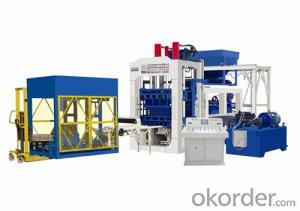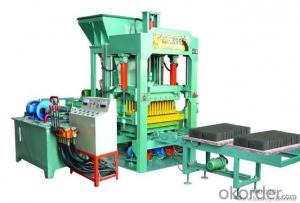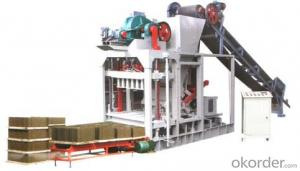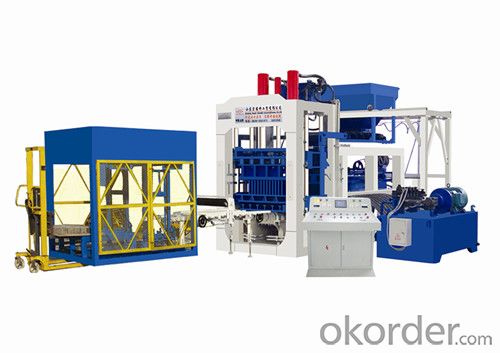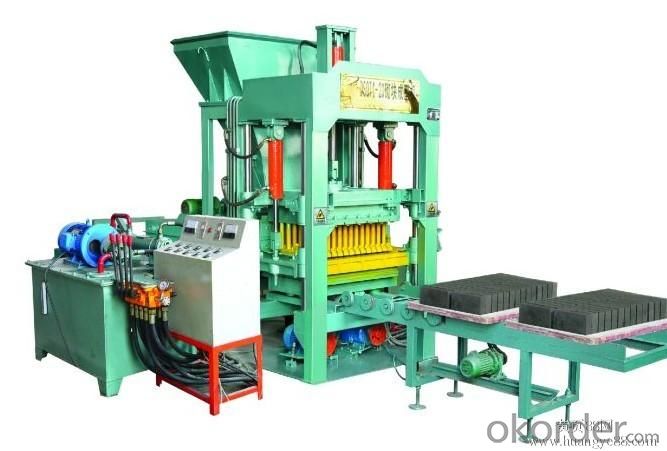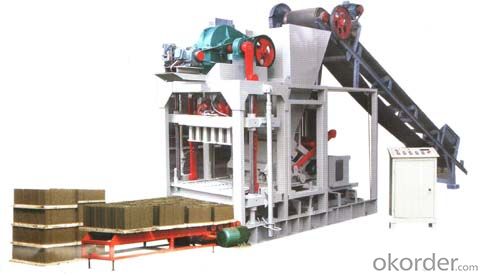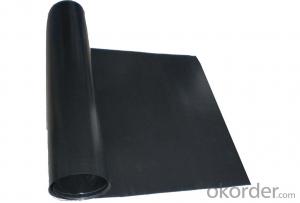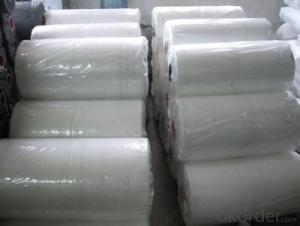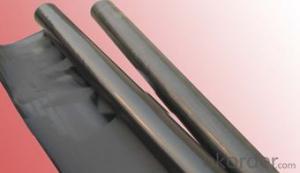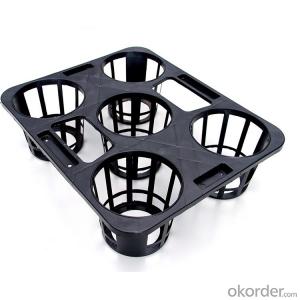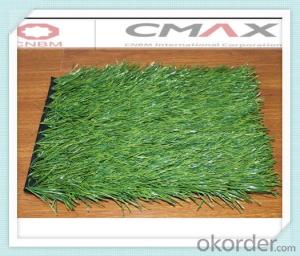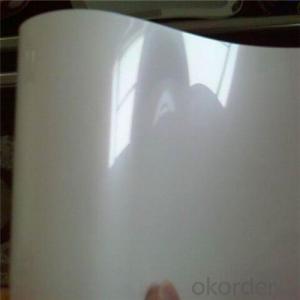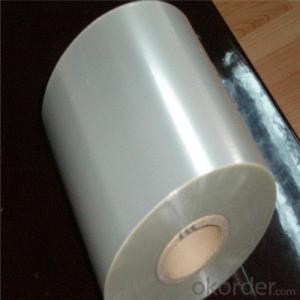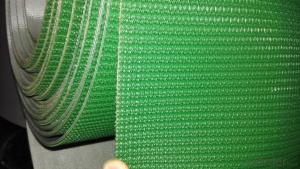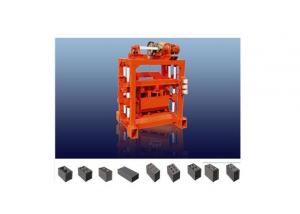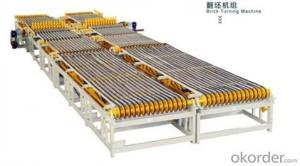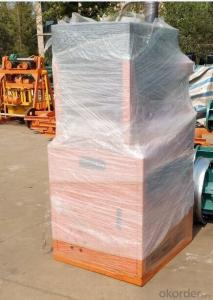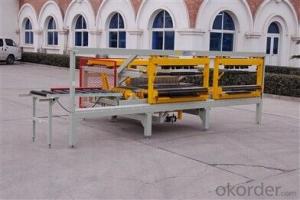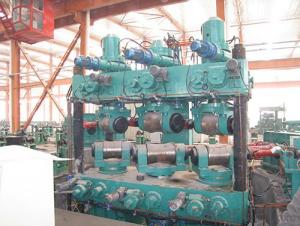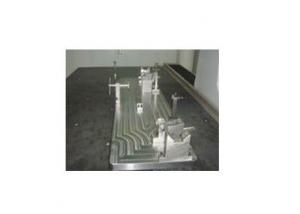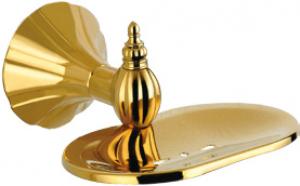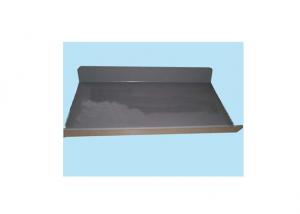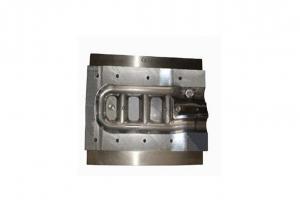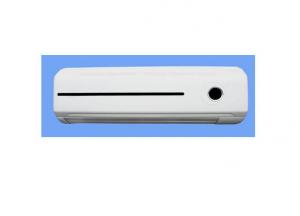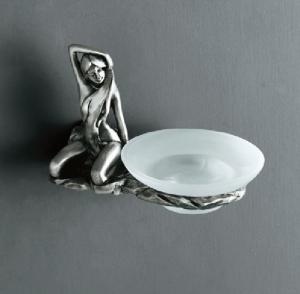Brick Making Machine Best Quality
- Loading Port:
- Tianjin
- Payment Terms:
- TT OR LC
- Min Order Qty:
- 1 unit
- Supply Capability:
- 500 unit/month
OKorder Service Pledge
OKorder Financial Service
You Might Also Like
Specifications
1.automatic hydraulic
2.Siemens motors,Mitsubish PLC
3.solid hollow paver interlock curbstone
4.ISO,CE,SGS
automatic hydraulic Concrete or Fly ash Brick Making Machine
1. automatic concrete brick making machine QT10-15 main advantages
(1) Full automatic and hydraulic automatic block making machine , can produce all kinds of bricks, and just change the moulds, such as the solid bricks, hollow blocks, paver blocks and so on.
(2) German Siemens motors
(3) Japan Mitsubishi PLC
(4) Omron travel switch
(5) The moulds: We adopt the heat treatment technique to increase the lifespan of the moulds
(6) Certificates: SGS/CE/ISO9001 2008
(7) Mould heat treatment & carburization technology
(8) Strong High-Strength Steel Structure
2.automatic concrete block machine QT10-15 Main technical parameters
1)The workshop area: 200m2
2)The office, curing area and stacking area to arrange according your fact status.
3)Worker requirement: From loading material to transport finished block we need about 5-6 person to operate the whole line.
3.automatic concrete brick making machine QT10-15 production
4. Raw Materials, Sources and Availability.
1) Fly-Ash:
this Raw material is freely available in Thermal Power plants. There are no taxes on this itemwhatsoever. Transportation charges are only to be attended by the entrepreneur.
2)Lime/OPC:
Lime used in this process is known as Hydrated Lime, which can be obtained by Calcining Burnt Lime. One KG of Burnt Lime gives 2.2 Kgs of Hydrated Lime after Calcining. Brunt Lime can be obtained from Kuddur, Andhra Predesh where Lime Kilns and High Quality Brunt Lime are pettily available. Alternativily Hydrated lime is available as an industrial by-product of Paper Mills
3)Gypsm:
This too is an industrial waste. This is available at Fertilizer Plant as in industrial wastes
4)Sand / Crusher Dust.
Sand is used as an economizer and to increase the strength of bricks to some extant. Sand is procured locally. Crusher dust can also be successfully used in place of sand.
5 automatic concrete brick making machine QT10-15 parts
(1).Cement silo (optional part, as it is hard to transport)
Freely structure, capacity 100Ton, diameter 2.3m, height 8.5-9m,weght 5T
(2).Screw conveyer
This is instrumental for transporting fly ash from the silos (optional fitting) or cement hopper (optional fitting) to the loading bins of the batching machine.
(3) PLD1200 batching machine
function: This is the starting point of the Production process. It consists of three loading bins and one weighing bin. It also contains belt conveyers to convey materials from loading bins to weighing bin. Batching and weighing is done by PLC control. We can load three different types of material into the loading bin.
(4) JS750 mixer machine
Function:All the ingredients are mixed in this mixture machine. The mixing time and speed is controlled by PLC. The inbuilt water pump adds water to the mix automatically, as per requirement.
(5) Belt conveying machine (8m)
When the batching plant’s weighing bin trips according to the PLC control, the material comes to this conveyor belt. The material is then carried to the mixture machine.
(6) Host machine
(7)Stacker
This lifts the pallets carrying the bricks/blocks, and stacks them on 5 to 6 layers automatically.
6.automatic concrete block machine QT10-15 production process:
7.running plant in worldwide
7.automatic briick making machine plant in worldwide
- Q: What can plastic particles do?
- Chemical industry: can be used as reaction kettle, pipe, container, pump, valve, etc., used in solving corrosion and wear of chemical production sites.
- Q: Can olive nets be used for olive trees in flood-prone areas?
- Yes, olive nets can be used for olive trees in flood-prone areas. Olive nets are primarily used to protect the olives from birds and other pests, but they can also provide some protection against heavy rainfall or flooding. However, it is important to note that while olive nets can help reduce the impact of flooding, they may not completely prevent damage to the trees or the olives in severe flood situations.
- Q: Are there any maintenance tips for olive nets during the off-season?
- Yes, there are a few maintenance tips for olive nets during the off-season. Firstly, make sure to clean the nets thoroughly before storing them to remove any dirt, debris, or olive residue. This will prevent the growth of mold or mildew. Additionally, check for any damages or tears in the nets and repair them if necessary to ensure they are in good condition for the next harvest season. Properly store the nets in a dry and well-ventilated area to prevent any moisture buildup.
- Q: Do olive nets require any specialized equipment for installation?
- Yes, olive nets typically require specialized equipment for installation. This may include tools such as poles, clips, and hooks to secure the netting properly over the olive trees.
- Q: Do olive nets affect the overall appearance of the olive tree orchard?
- Yes, olive nets do affect the overall appearance of the olive tree orchard. The nets are used to protect the olives from pests and birds, but they also create a visual change in the orchard. The nets cover the trees and can alter their natural aesthetic, making the orchard look different compared to when the trees are uncovered.
- Q: Can olive nets be used on trees of different ages?
- Yes, olive nets can be used on trees of different ages. Olive nets are versatile and can be used on both young and mature olive trees to protect the harvested olives from falling to the ground.
- Q: What are the characteristics of plastic products?
- Three indispensable synthetic materials in daily life. Specifically, the plastic is made of natural or synthetic resin as the main ingredient, adding various additives, in certain conditions such as temperature and pressure can be made into a certain shape, keep shape materials at room temperature.
- Q: Are olive nets reusable?
- Yes, olive nets are generally reusable. They can be used multiple times for harvesting olives, as long as they are properly maintained and stored.
- Q: Can olive nets be used on trees with a large trunk?
- Yes, olive nets can be used on trees with a large trunk. Olive nets are designed to cover the entire tree canopy, regardless of the size of the trunk. They are flexible and can be adjusted to fit trees of various sizes, making them suitable for trees with large trunks as well.
- Q: What happens when plastic gets wet and sticky?
- Resolvent:Small areas can be polished with water sandpaper;If the area is relatively large, can use manual portable water grinding grinding mill;If the original brightness is relatively high, it can be polished after polishing;It should be noted that, as far as possible to avoid indiscriminate use of detergent, and if they are not sure, it is best to ask professional engineering team, but also to do a sample.
Send your message to us
Brick Making Machine Best Quality
- Loading Port:
- Tianjin
- Payment Terms:
- TT OR LC
- Min Order Qty:
- 1 unit
- Supply Capability:
- 500 unit/month
OKorder Service Pledge
OKorder Financial Service
Similar products
Hot products
Hot Searches
Related keywords
